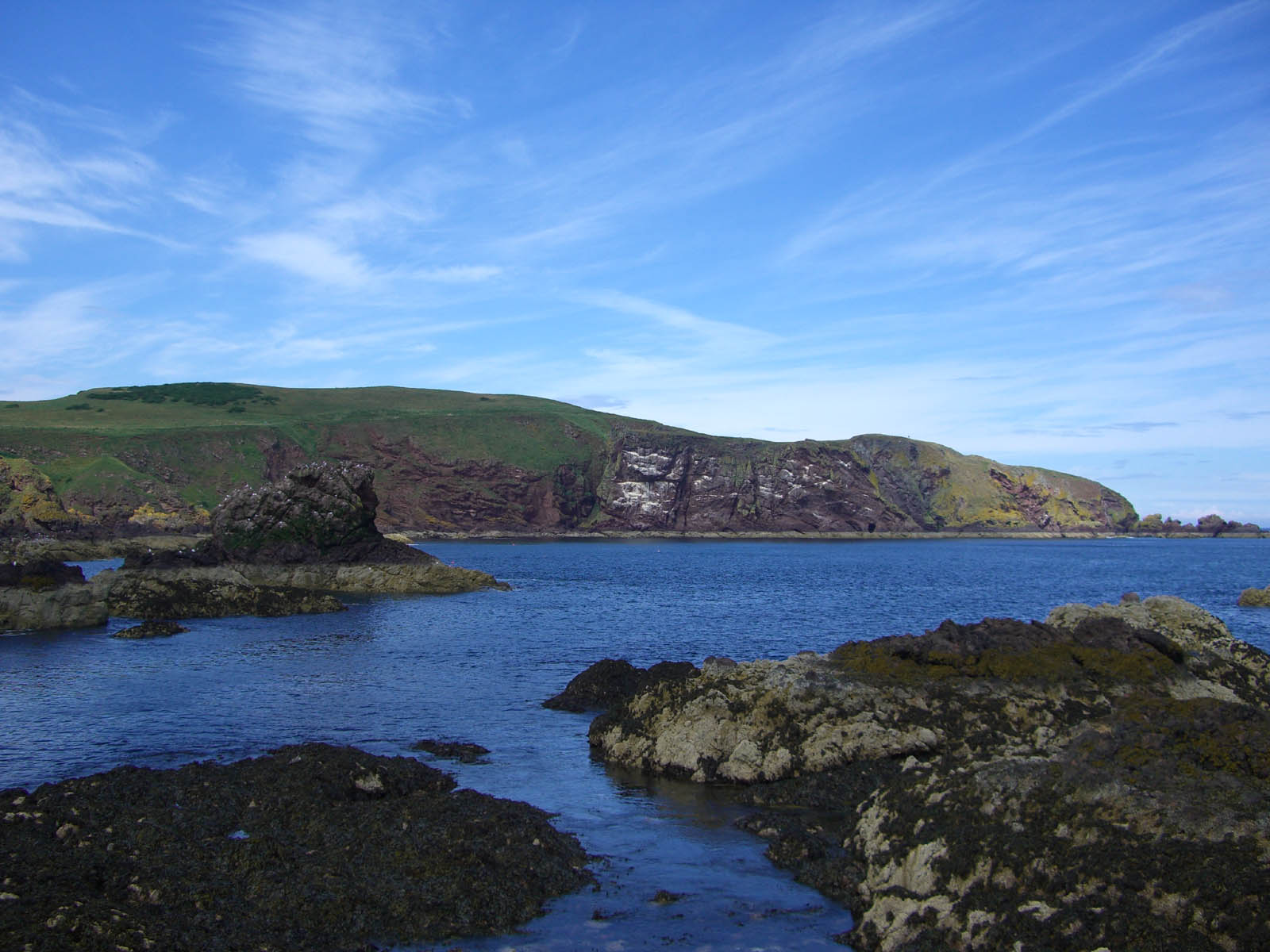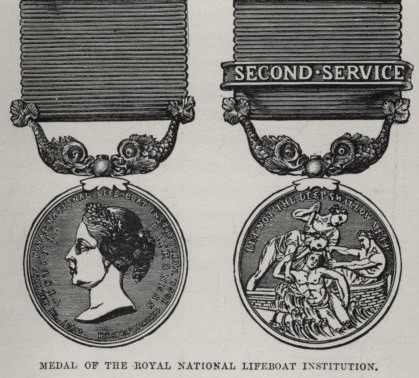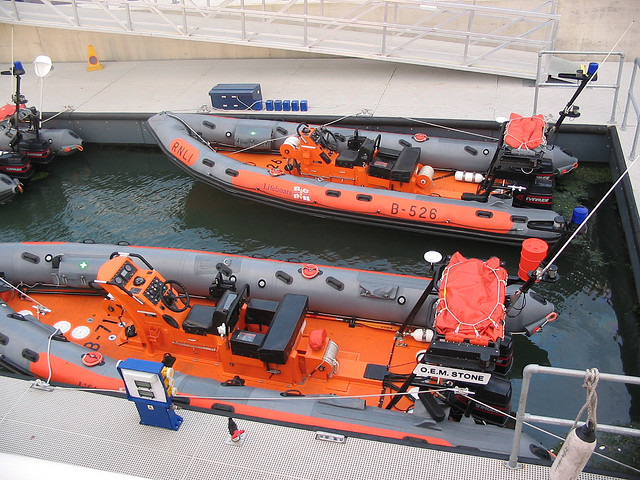|
St Abbs Lifeboat Station
St Abbs Lifeboat is an independent marine-rescue facility in St Abbs, Berwickshire, Scotland. Independent lifeboat St Abbs Lifeboat is run as an independent charity (SCIO) registered in Scotland (Charity Number SC046312). The charity operates an independent rescue service outside of the Royal National Lifeboat Institution (RNLI). Thomas Tunnock & Sons Ltd, a Scottish company, has contributed £260,000 towards the purchase of a new lifeboat to be called ''Thomas Tunnock''. The new St Abbs Lifeboat arrived at the station on 28 July 2016 and was officially named ''Thomas Tunnock'' during a naming ceremony on 17 September 2016. ''Thomas Tunnock'' is an 900W Rigid Inflatable Boat built by MST (Marine Specialised Technology Ltd) based in Liverpool. She has a maximum speed of 47 knots and is one of the fastest lifeboats in the UK. Specification of lifeboat *Name: ''Thomas Tunnock'' *Manufacturer: Marine Specialised Technology *Model: 900W *Crew: 4 *Length LOA: 9 metres *Beam BOA: ... [...More Info...] [...Related Items...] OR: [Wikipedia] [Google] [Baidu] |
Berwickshire
Berwickshire ( gd, Siorrachd Bhearaig) is a historic county, registration county and lieutenancy area in south-eastern Scotland, on the English border. Berwickshire County Council existed from 1890 until 1975, when the area became part of the Borders region, with most of the historic county becoming part of the lower-tier Berwickshire district. Berwickshire district was abolished in 1996, when all the districts in the Borders region merged to become the Scottish Borders council area. The county takes its name from Berwick-upon-Tweed, its original county town, which was part of Scotland at the time of the county's formation in the twelfth century, but became part of England in 1482 after several centuries of swapping back and forth between the two kingdoms. After the loss of Berwick, Duns and Greenlaw both served as county town at different periods. The low-lying part of Berwickshire between the Tweed and the Lammermuirs is known as "the Merse", from an old Scots word for a ... [...More Info...] [...Related Items...] OR: [Wikipedia] [Google] [Baidu] |
D-class Lifeboat (EA16)
The D-class (EA16) lifeboat is a class of inflatable boat operated since 1987 by the Royal National Lifeboat Institution of the United Kingdom and Ireland. It has been replaced operationally by the D-class lifeboat (IB1), D-class (IB1), but many are still used as part of the relief fleet, as boarding boats for the larger classes of lifeboat and by the RNLI Flood Rescue Team. The type designator ''EA16'' stands for ''Evans Avon 16''. Utilization For more than 40 years the D-class served as the workhorse of the RNLI Inshore Lifeboat (rescue), Lifeboat (ILB) fleet. Significantly smaller in comparison to the rest of the inshore fleet, the D-class is also one of the few RNLI types not to feature a rigid hull. The main aspect of the boat would be both its size and weight - only . The D-class was specifically designed as a light and highly manoeuvrable rapid response craft. Design and construction The D-class lifeboat consists of two sponsons, together housing seven inflatable segmen ... [...More Info...] [...Related Items...] OR: [Wikipedia] [Google] [Baidu] |
Awards Of The Royal National Lifeboat Institution
A number of Royal National Lifeboat Institution awards have been established by the Royal National Lifeboat Institution (RNLI) since its creation in 1824. None are approved by the Crown, and are therefore unofficial awards. As such, they do not appear in the official British order of wear, although the principal lifesaving award, the ''Medal of the RNLI'', can be worn on the right breast in uniform by members of the British armed forces. RNLI awards The RNLI awards include: Medal of the RNLI The medal was established in 1824, the same year the RNLI was founded, to reward "humane and intrepid exertions in saving life from shipwrecks on our coasts, deemed sufficiently conspicuous to merit honourable distinction". The medal can be awarded for saving life at sea in gold, silver and, since 1917, in bronze. While awards are now only made to lifeboat crew who risk their lives in rescue attempts, a number of nineteenth century medals were bestowed on others who saved life from the s ... [...More Info...] [...Related Items...] OR: [Wikipedia] [Google] [Baidu] |
D-class Lifeboat (IB1)
The D-class (IB1) lifeboats are inflatable boats serving in the RNLI inshore lifeboat (ILB) fleet as well as a number of Independent Lifeboats around the UK and Ireland. Although they are known as the "IB1" at times, they are the latest development of the D-class lifeboat and as such are mainly referred to as a "D-class". This class of lifeboat is one of the smallest operated by the RNLI, and they are a common sight at lifeboat stations round the coast. Unlike other members of the ILB fleet, the D-class (IB1) does not have a rigid hull. All others with the exception of the Arancia, hovercraft A hovercraft, also known as an air-cushion vehicle or ACV, is an amphibious Craft (vehicle), craft capable of travelling over land, water, mud, ice, and other surfaces. Hovercraft use blowers to produce a large volume of air below the hull ... and all-weather lifeboat tenders are rigid inflatable boats. The IB1 normally has a crew of three or four and is primarily used for surfe ... [...More Info...] [...Related Items...] OR: [Wikipedia] [Google] [Baidu] |
Trent-class Lifeboat
The Trent-class lifeboat is an all-weather lifeboat operated by the Royal National Lifeboat Institution (RNLI) from 30 stations around the coasts of Great Britain and Ireland to provide coverage up to out to sea. Introduced to service in 1994, the class is named after the River Trent, the second longest river wholly in England. History In the 1980s the RNLI's and all-weather lifeboats provided coverage out to sea, operating at up to to cover the distance in two hours in good weather. However the RNLI felt that they needed the capability to extend their coverage to radius which would require lifeboats with a top speed of . This resulted in the Trent and lifeboats. The prototype for the Trent class was built in 1991. It was used for trials until 1994, when it was put into active service at Alderney Lifeboat Station. It remained on station there until their own boat was available in 1995, since when it has served in the relief fleet. Construction of its sister boats contin ... [...More Info...] [...Related Items...] OR: [Wikipedia] [Google] [Baidu] |
Atlantic 75-class Lifeboat
The Atlantic 75 is part of the B-class of lifeboats that serve the shores of the United Kingdom as a part of the RNLI inshore fleet. The Atlantic 75 is the second generation Rigid Inflatable Boat (RIB) in the B-class series, developed from the Atlantic 21. These boats gradually replaced the Atlantic 21 fleet, but have now been superseded by the new Atlantic 85-class lifeboat The Atlantic 85 is part of the B-class of lifeboats that serve the shores of the United Kingdom and Ireland as a part of the RNLI inshore fleet. The Atlantic 85 is the third generation B-class Rigid Inflatable Boat (RIB) developed from the an .... Description One of the main improvements made to the Atlantic 75 is the addition of a ballast tank at the front of the boat which enables the boat to launch into larger surf than the Atlantic 21. The ballast when full, either of sea water or water from a hose, weighs the same as three fully grown men. Fleet References External links RNLI Flee ... [...More Info...] [...Related Items...] OR: [Wikipedia] [Google] [Baidu] |
Atlantic 21-class Lifeboat
The Atlantic 21 is part of the B class of lifeboats that served the shores of the United Kingdom and Ireland as part of the Royal National Lifeboat Institution (RNLI) inshore fleet. The Atlantic 21 was the first generation rigid inflatable boat (RIB), originated at and by Atlantic College in South Wales, the birth place of the RIB after which the craft is so named. The school was also one of nine locations where the RNLI first established lifeboat stations using smaller inshore watercraft. Atlantic College Lifeboat Station was commissioned by the RNLI in 1963 and decommissioned in 2013. Nearly all of the Atlantic 21s have been retired from service by 2006, one of the notable exceptions to this being the boat allocated to Walmer in Kent. RNLB ''James Burgess'' (B-589) was retired to the relief fleet in December 2006. It was replaced by an Atlantic 85. Description The Atlantic 21 can be launched from a davit, trolley or floating boathouse depending on the location of the sta ... [...More Info...] [...Related Items...] OR: [Wikipedia] [Google] [Baidu] |
C-class Lifeboat
The C-class lifeboats were Zodiac Grand Raid Mark IVs powered by twin 40 hp outboards and was formerly operated by the Royal National Lifeboat Institution of the United Kingdom and Ireland Ireland ( ; ga, Éire ; Ulster Scots dialect, Ulster-Scots: ) is an island in the Atlantic Ocean, North Atlantic Ocean, in Northwestern Europe, north-western Europe. It is separated from Great Britain to its east by the North Channel (Grea .... It was replaced by the D-class (EA16) and B-class (Atlantic 21). Fleet Notes References External linksRNLI Fleet Royal National Lifeboat Institution lifeboats Ship classes {{Water-sports-stub ... [...More Info...] [...Related Items...] OR: [Wikipedia] [Google] [Baidu] |
Waveney-class Lifeboat
The Waveney-class lifeboat was the first class of lifeboats operated by the Royal National Lifeboat Institution (RNLI) capable of operating at speeds in excess of . Based on an American design, 22 saw operational service between 1964 and 1999 at the RNLI's stations around the coast of the United Kingdom and Ireland. After being superseded by faster boats in the 1990s, many were sold for further use with lifeboat services abroad, notably in Australia and New Zealand. The class name comes from the River Waveney which discharges into the North Sea at Great Yarmouth. History In the 1960s the RNLI's fleet consisted of motor lifeboats of limited speed due to the shape of their hulls. The United States Coast Guard (USCG) had developed a 44-foot motor lifeboat which planed across the surface of the water, the consequence of which is a reduced wetted surface area to the hull, and therefore a much higher speed. One was built for the RNLI by the USCG in Curtis Bay Coast Guard Yard, Maryl ... [...More Info...] [...Related Items...] OR: [Wikipedia] [Google] [Baidu] |
Eyemouth Lifeboat Station
Eyemouth Lifeboat Station is a Royal National Lifeboat Institution (RNLI) marine-rescue facility in Eyemouth, Berwickshire, Scotland. The station was founded in 1876 to protect local fisherman during periods of poor weather conditions. The original lifeboat house in the town cost £500 to build. This was replaced in 1908 with a new boathouse, with new facilities completed in 1992, and extended in 2010 at a cost of over £200,000. The station's lifeboat has been placed in the town's harbour afloat since the 1960s with a pontoon berth most recently been added in 2008. The station currently has the ''RNLB Helen Hastings'' all weather Shannon-class lifeboat The Shannon-class lifeboat (previously FCB2 – Fast Carriage Boat 2) is the latest class of lifeboat currently being deployed to the RNLI fleet to serve the shores of the British Isles. The Shannon class is due to replace the Mersey class carr ... and ''Sheila'' inshore in service. The station has received two RNLI medals ... [...More Info...] [...Related Items...] OR: [Wikipedia] [Google] [Baidu] |
Jane Hay
Jane Hay (10 March 1864 - 26 January 1914) was a Scottish philanthropist and campaigner. She was elected to the Edinburgh Parish Council in 1895 and campaigned to improve the lives of poor children in the city. Early life Jane Hay was born in Leith to James Hay (1799 - 1880), a merchant and Margaret Scott, a dressmaker. Her father was well known among the literary, artistic and legal circles of Edinburgh. She attended university in London. Philanthropy As a member of the Edinburgh Parish Council, Hay campaigned for nurses for the children in the workhouse and so deeply moved by the plight of the children, she adopted six orphans. She then turned her attention to deserting fathers, convincing the council to hunt them down and send them to prison for not supporting their families. She served on the council for 7.5 years and also served for 3 years on the Edinburgh School Board. As a result of her work, Hay gave lectures at the Normal School in Edinburgh on topics such as "Wome ... [...More Info...] [...Related Items...] OR: [Wikipedia] [Google] [Baidu] |
Scotland
Scotland (, ) is a country that is part of the United Kingdom. Covering the northern third of the island of Great Britain, mainland Scotland has a border with England to the southeast and is otherwise surrounded by the Atlantic Ocean to the north and west, the North Sea to the northeast and east, and the Irish Sea to the south. It also contains more than 790 islands, principally in the archipelagos of the Hebrides and the Northern Isles. Most of the population, including the capital Edinburgh, is concentrated in the Central Belt—the plain between the Scottish Highlands and the Southern Uplands—in the Scottish Lowlands. Scotland is divided into 32 administrative subdivisions or local authorities, known as council areas. Glasgow City is the largest council area in terms of population, with Highland being the largest in terms of area. Limited self-governing power, covering matters such as education, social services and roads and transportation, is devolved from the Scott ... [...More Info...] [...Related Items...] OR: [Wikipedia] [Google] [Baidu] |


_-_geograph.org.uk_-_1423483.jpg)


_-_geograph.org.uk_-_1059479.jpg)
